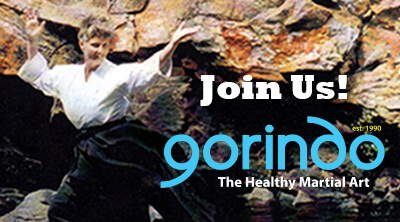I am beginning to spar in class
I am beginning to spar in class. I found myself flinching and closing my eyes. Short of just getting used to it, are there any drills I can do to train against flinching? Philip - USA
It is a natural reaction to flinch and close your eyes when something comes near your face. It is, however, a reaction that can be controlled, to your advantage as a martial artist. It is easy to see that while closing the eyelids can protect the eye from minor irritations such as dust or other small debris it is no protection from a blow with any force. The ability to avoid a strike by being aware of its trajectory and proximity to your face is all-important to being able to avoid it. We must retrain what is a first defense instinct into a more useful second line of defense that can avoid and deflect any danger to the eye, and thus the face and head.
- Begin by generally improving your speed of movement and blocking. By gaining confidence in this area by way of exercises in footwork, displacement, bobbing and weaving, as well as repetitive basic exercises in all the standard blocks, you will be more able to redirect your reactions to the stimulus of an attack. The unconscious must be trained along with the conscious mind in evaluating and determining a response.
- Practice with a partner who you can trust to be accurate and exercise control. You can begin to slowly and progressively train the eye and brain to perceive and follow the line of movement and co-ordinate it with your own avoidance, and if necessary, deflection motions. Work with a variety of trajectories: straight on, uppercut, descending as well as circular roundhouse strikes. Practice systematically, beginning with very slow motions and gradually speeding them up only when you are able to dodge and deflect without a flinch or blink.
- Another exercise is to use a small basin of water. Using the fingers, flick droplets of water near the eyes; your cheeks, forehead, chin. Concentrate on your awareness of the water and your response. Try to develop a diffuse range of vision, not focusing directly on the incoming water (or fist) but a general radar that you can monitor both with direct and peripheral vision. Take your time. The training of this response will improve gradually through regular practice.





